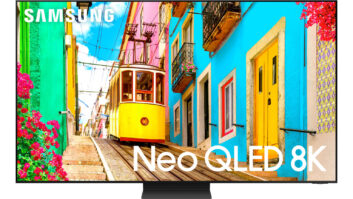Like a trophy date, Panasonic’s SC-HT920 home theater system looks good, costs a little more and has some substance to go with its style.
This combination of attributes made the DVD-equipped home theater in a box (HTiB) system a popular choice to bring home during the 12 months ending May 2005, the Port Washington, N.Y.-based The NPD Group sell-through statistics show. The 920 ranked third in unit share during that time and wasn’t far behind the No. 2 system, even though, according to Beyen International, its was priced significantly higher than either of the two best-selling systems and higher than all but one of the top 10 systems by unit volume.
Because of its step-up price, the 920 was the top-selling DVD-equipped HTiB in retail-level dollars during most of the 12-month period, Panasonic said.
In units, the 920 garnered a slightly higher share, closing in on the No. 2 system, even though the 920 was advertised by retailers at a significantly higher price than most other top 10 models. In print media, the 920’s median advertised price was $499, compared to the No. 2 system’s $299. The highest priced system among the top 10 was advertised at a median price of $599 and ranked ninth in unit sales during the period.
The prices are after instant rebates and mail-in rebates and don’t include gift cards that some retailers included with the purchase of select products.
Advertising support and distribution don’t fully account for the 920’s success, Beyen statistics indicate. The No. 3 920 was advertised in print by retailers almost as often as the No. 2 system, with 2,289 and 2,367 ad placements, respectively.
Likewise, the distribution of the No. 2 and No. 3 models was virtually identical. Beyen found that almost all of the same retailers advertised both models aggressively. The shared retailers included Best Buy, BrandsMart USA, Circuit City, Frys, P.C. Richard, R.C. Willey, Sears, Rex, Ultimate Electronics/Sound Track and 6th Avenue Electronics. The No. 2 unit was also sold through Bernie’s, Bill Smith and Meijer, while Panasonic’s 920 was additionally sold through H.H. Gregg and J&R Music World.
In contrast, the No. 1 system achieved its top status at least in part because it was advertised by retailers many more times — 3,151 times in fact. In addition, it was advertised at a much lower price than the second- and third-ranked systems at $199, and its distribution was even broader, including the above-mentioned retailers as well as ABC Warehouse, Smith, CompUSA, Conn’s, Handy TV Appliances, Stereo Advantage, Target and Wal-Mart.
What made it possible for a higher priced Panasonic unit to wage a competitive market-share battle with lower priced systems?
Performance, value and attention-getting cosmetics, contended Reid Sullivan, Panasonic’s entertainment merchandising VP. The system “sounded great compared to the competition, and it offered a great value but not necessarily at the lowest price,” he explained.
The system, replaced earlier this year by the 930, featured high power output, two-way speakers on all channels, and attention-getting, left-right, narrow-profile tower speakers. “It was one of the first systems with tower speakers, and their height was fully adjustable to match the height of a TV,” he said.
Because of the success of tower-equipped HTiBs, he said, “everyone added towers in 2005.”
Comparing the 920 to the competition, Sullivan also cited a “huge difference in speaker construction,” which boosts audio performance. Combined with higher power output compared to the competition, the system’s audio quality could be heard on a noisy sales floor, he said. “Our speakers offered performance, style and flexibility,” he contended.
To deliver style, the 920 featured the narrow-profile tower speakers, a slimmer center channel than other systems, a diamond-shaped subwoofer and trapezoid-shaped surrounds.
As for value, the 920 delivered it not only through its performance but also with a laundry list of features, including playback of many disc types, progressive-video output and a five-disc carousel changer that’s easier to use than competitors’ elevator-style changers, Sullivan added. (See Key Features, at right.) “We’re among the most compatible with many types of discs,” he noted.
The underlying reason for the 920’s performance and value is Panasonic’s refusal to outsource HTiB production, Sullivan contended. Panasonic is able to maintain quality control in its own factory in Singapore and implement its own technology to differentiate its products from others, he said.
Unlike such digital products as DVD, where differences tend to diminish among products at similar price points, HTiBs offer plenty of opportunities to differentiate based on performance, he said. “There’s still an art to producing good sound quality,” he explained.
There’s an art to merchandising, too, and here Panasonic encouraged its dealers to present Panasonic HTiBs and TVs together to show how well they match cosmetically and to increase HTiB attachment rates.
Panasonic said it didn’t offer financial incentives to reduce the combined cost of a TV and HTiB purchased simultaneously; nonetheless, four retailers in 111 of 2,289 Panasonic HTiB ads promoted a one-price package combining the 920 with a TV or other video product, according to Beyen International. The primary promoter was Ultimate/Sound Track, which in 105 ads promoted a bundle at $100 off their combined regular prices. The TV brand was Panasonic.












